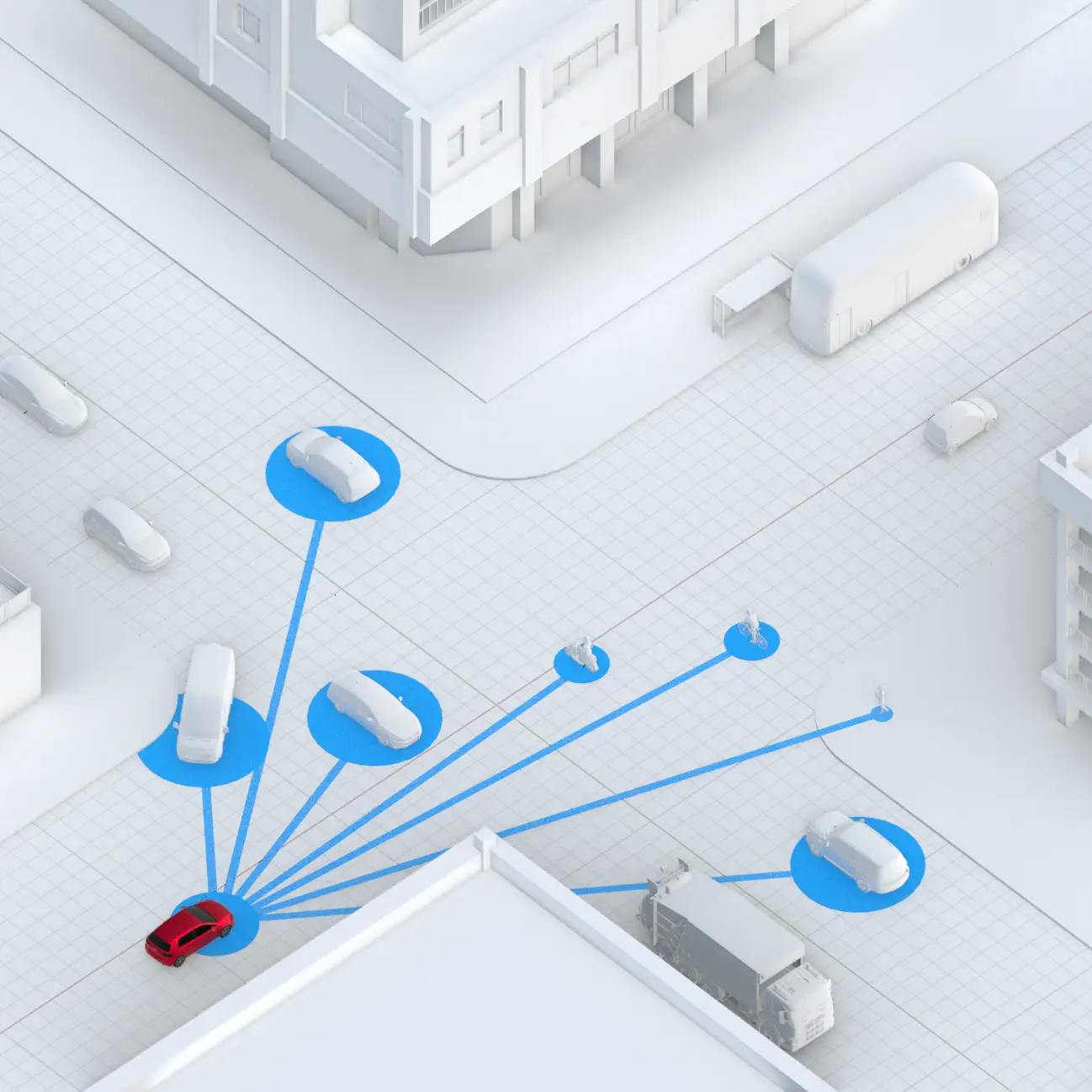
Building the Future of Traffic Safety
Powering Streetscope's AI-Driven Computer Vision Platform
Vynyl partnered with Streetscope to engineer a platform that transforms how the autonomous vehicle industry measures and validates safety. From GPU-accelerated data pipelines to advanced object detection systems, we enabled Streetscope to deliver the industry's first of it's kind AI safety measurement platform.
The Challenge
The autonomous vehicle industry faces a fundamental validation challenge: traditional safety metrics relied on actual collision data, requiring billions of miles of driving to achieve statistical significance. Near-miss events and hazardous interactions, the most valuable leading indicators of actual risk, remained unmeasured.
Streetscope needed a technology partner capable of building a genuinely complex platform that could process vast amounts of video and , detect and track multiple traffic objects simultaneously, and compute physics-based safety metrics at scale.

Vynyl's Solution
1. GPU-Accelerated Computer Vision Pipeline
We implemented a state-of-the-art object detection system built on top of the latest Ultralytics YOLO model, specifically optimized for traffic scene analysis. The platform feeds video frames into neural network models running on GPU infrastructure, detecting and classifying multiple object types with sub-second latency.
Optimizing GPU resource management presented a unique challenge. Our solution involved developing auto-scaling mechanisms that dynamically allocated GPU resources, ensuring consistent performance during peak video processing demands and optimized costs during lighter periods.
2. M×M Interaction Analysis and Hazard Computation
For fixed camera scenarios, we custom engineered the implementation of Streetscope's proprietary algorithm that computes safety hazard measures across every possible object pair in the scene. The scale of the computation is vast: with 20 objects in a scene, 190 simultaneous hazard calculations occur, performed 30 times per second.
The implementation integrates proximity and motion data to compute Streetscope's proprietary Collision Hazard Measure (SHM™), providing unprecedented insight into traffic dynamics and risk patterns that would be impossible to capture through traditional methods.
3. Hotspot Analytics and Spatial Intelligence
We also developed innovative analytics features, using the clients algorithms, that identify hotspots where hazardous interactions consistently occur. The hotspot detection algorithm employs clustering techniques to identify dangerous locations, whether at specific intersections, merge points, or pedestrian crossings. These insights aggregate at the project level across multiple videos, enabling fleet-wide safety analysis and urban planning applications.
4. Scalable AWS Infrastructure
We architected the entire platform with AWS CloudFormation, storing all data in S3, enabling cost-effective devops while supporting parallel processing of multiple videos simultaneously.
The platform leverages EC2 GPU instances for computer vision processing, Lambda functions for serverless data processing, and auto-scaling groups to ensure consistent performance. We implemented data processing pipelines using Pandas and Polars for efficient data wrangling, maintaining complete data lineage from raw video through final safety metrics.
Zooming Out: Strategic Insights for Enterprise AI Implementation
1. Platform Engineering Excellence Enables AI Success
Our custom implementation illustrates how successful AI deployment requires comprehensive platform engineering beyond just model implementation. The combination of GPU optimization, cloud architecture, and data pipeline design determines whether AI capabilities translate into practical, scalable solutions.
2. Integration Flexibility Accelerates Adoption
The sensor-agnostic, API-first design we implemented removes adoption barriers by working with existing infrastructure and partner systems. The ability to accept diverse inputs and deliver customizable outputs substantially expands addressable markets.
3. Operational Efficiency Drives Competitive Advantage
By automating complex processes like camera calibration and implementing intelligent resource scaling, the platform enables Streetscope to serve more customers with less operational overhead. This efficiency translates directly to competitive pricing and faster time-to-value for customers.
Conclusion
Through sophisticated computer vision engineering and robust cloud architecture, we transformed Streetscope's innovative algorithms into a scalable platform that's revolutionizing traffic safety measurement . The implementation showcases our ability to tackle genuinely complex technical challenges while maintaining the operational efficiency and flexibility that drive real business value.
Take The Next Step
Schedule a conversation today and discover how partnering with Vynyl can turn your biggest challenges into market-defining advantages.



